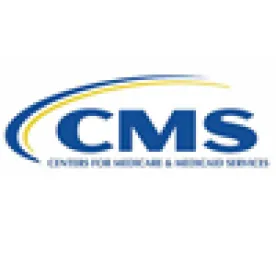On May 3, 2019, the Centers for Medicare and Medicaid Services (“CMS”) released long-awaited draft guidance (the “Guidance”), proposing to allow hospitals to co-locate with other hospitals or healthcare facilities in certain circumstances.
In welcome news for the industry – particularly for hospitals that co-locate provider-based space with non-provider-based facilities – CMS has proposed that hospitals may co-locate with other hospitals or healthcare entities on the same campus or in the same building, either in its entirety or only in part, sharing certain space, staff, and/or services. To date, some industry participants have struggled with whether and/or to what extent a hospital is able to co-locate with other health care facilities – indeed, the CMS Chicago Regional Office once issued a letter denying off-campus provider-based status to a hospital because, in part, that location merely shared common areas with another health care facility. In the Guidance, CMS delineates its proposed expectations and requirements for how hospitals must operate when they co-locate, addressing (1) space sharing, (2) contracted services, and (3) emergency services.
1. Space Sharing: Public Space vs. Clinical Space
CMS proposes to allow hospitals to co-locate, stating that co-location occurs where “two hospitals or a hospital and another healthcare entity are located on the same campus or in the same building and share space, staff or services.” This proposal is significant, in and of itself – and particularly for off-campus provider-based departments of a hospital, which entertained compliance risk any time that they shared space with a non-provider-based health care facility.
However, CMS would not allow all space to be shared, but rather would establish different rules for “public spaces” and “clinical spaces”. Hospitals would be allowed to share “public spaces” with a co-located hospital or healthcare entity. Public spaces would include public lobbies, waiting rooms and reception areas (with separate “check-in” areas and clear signage), public restrooms, staff lounges, elevators and main corridors through non-clinical areas, as well as main entrances to a building. In these spaces, both entities would be individually responsible for compliance with their respective Medicare Conditions of Participation (“CoPs”).
CMS would require hospitals to maintain complete control over distinct “clinical spaces” at all times, in order to comply with CoPs for infection control, patient management, privacy and confidentiality, and other quality and safety standards. “Clinical spaces” would include any non-public space where patient care is provided, including, but not limited to, any space within nursing units, outpatient clinics, emergency departments, operating rooms, and post-anesthesia care units. Importantly, public paths of travel (hallways) through clinical areas would also be considered “clinical” spaces and thus could not be shared.
The Guidance appears to leave open the question of whether CMS would consider medical record storage space, patient registration space, and admission space to be either “public space” or “clinical space” – indicating that the sharing of such space could “potentially pose a risk to patient privacy as an unauthorized person could have access to patient records without consent,” even though patient care is not typically provided in such spaces.
Survey Preparation: As the Guidance proposes to instruct surveyors to review floor plans with a critical eye towards distinguishing the spaces being used by each entity, co-locating hospitals should consider making it a practice to develop and maintain floor plans that clearly define and identify hospital space, the other entity’s space, and shared space.
2. Contracted Services
The Guidance identifies a number of services that CMS would allow to be provided under contract or arrangement with another co-located hospital or healthcare entity. When contracting for staff, the contractual arrangement would have to include clear lines of authority and accountability for the staff, and staff would have to be assigned to work solely for one entity during a specific shift – they would not be able to float, be concurrently on-call, or provide services to both entities simultaneously.
In addition to scheduling restrictions, CMS would require staff contracted from a co-located entity to receive the same education and training in all relevant hospital policies and procedures as received by direct employees of the hospital, and to meet the same quality of care and service standards. CMS would also require the hospital’s governing body to maintain responsibility for ensuring adequacy of staff levels, adequate oversight and periodic evaluation of contracted staff, proper education and training, staff knowledge of and adherence to quality and performance improvement standards, and clinical practice accountability.
Survey Preparation: The Guidance proposes to instruct surveyors to request and review the following documentation, which a co-locating hospital would be prudent to create and maintain on file: (1) documentation of how the contracted services are incorporated into the hospital’s Quality Assurance and Performance Improvement (“QAPI”) program, including how the services are monitored and evaluated for program compliance (2) contracts for staffing services, including provisions that pertain to staff adequacy, oversight and evaluation, training, education, and knowledge of QAPI standards, (3) staffing schedules that ensure staff are immediately available at all times, are not being simultaneously shared with another hospital or entity, and are only scheduled to work at one entity per shift, and (4) a sample of personnel files that contain documentation verifying that contracted staff are appropriately educated and trained.
3. Emergency Services
The Guidance also expounds upon CMS’ requirements for emergency care policies and procedures, clarifying that these policies and procedures should cover: (1) identifying when a patient is in distress, (2) how to initiate an emergency response, (3) how to initiate treatment, and (4) recognizing when the patient must be transferred to another facility to receive appropriate treatment. CMS would permit a hospital to contract with a co-located hospital or entity for the appraisal and initial treatment of patients needing emergency care, as long as the contracted staff are not working or on duty simultaneously at the other entity.
A hospital without an emergency department that co-locates with another hospital that has an emergency department would not be allowed to arrange to have that other hospital respond to its emergencies in its stead. However, a hospital could contract with the emergency staff of a co-located entity to perform other duties within the hospital and be immediately available for an emergency, as long as the emergency staff did not perform duties at the co-located entity during the same time. CMS notes that hospitals without emergency departments that contract for emergency services from a co-located hospital would still have to meet EMTALA requirements.
Survey Preparation: When evaluating the provision of emergency care by a hospital without an emergency department and that is co-located with another healthcare entity, a surveyor would be instructed to answer the following questions:
-
Does the hospital respond to its own in hospital emergencies, with its own trained staff?
-
Does the hospital have proper emergency equipment in the event that a patient requires resuscitation?
-
Is hospital staff properly trained in the use of the emergency equipment?
-
Is the hospital’s emergency equipment properly maintained?
-
Is hospital staff properly trained for appraisal of emergencies, initial treatment, and referral when appropriate?
Additionally, the surveyor would be required to verify that the hospital meets EMTALA requirements and that contracted staff are immediately available and only committed to providing services at that hospital during those times. Therefore, co-locating hospitals would be wise to develop and maintain on file documentation that addresses each of these questions.
The Guidance, even in its current draft form, offers much needed clarification about the characteristics of co-location arrangements that CMS may consider acceptable or unacceptable. Hospitals that believe the Guidance does not appropriately reflect legitimate co-location arrangements may wish to consider submitting comments to CMS, which are due by July 2, 2019. Thereafter, hospitals with co-location arrangements should carefully review CMS’ final guidance to ensure continued compliance.




 />i
/>i

